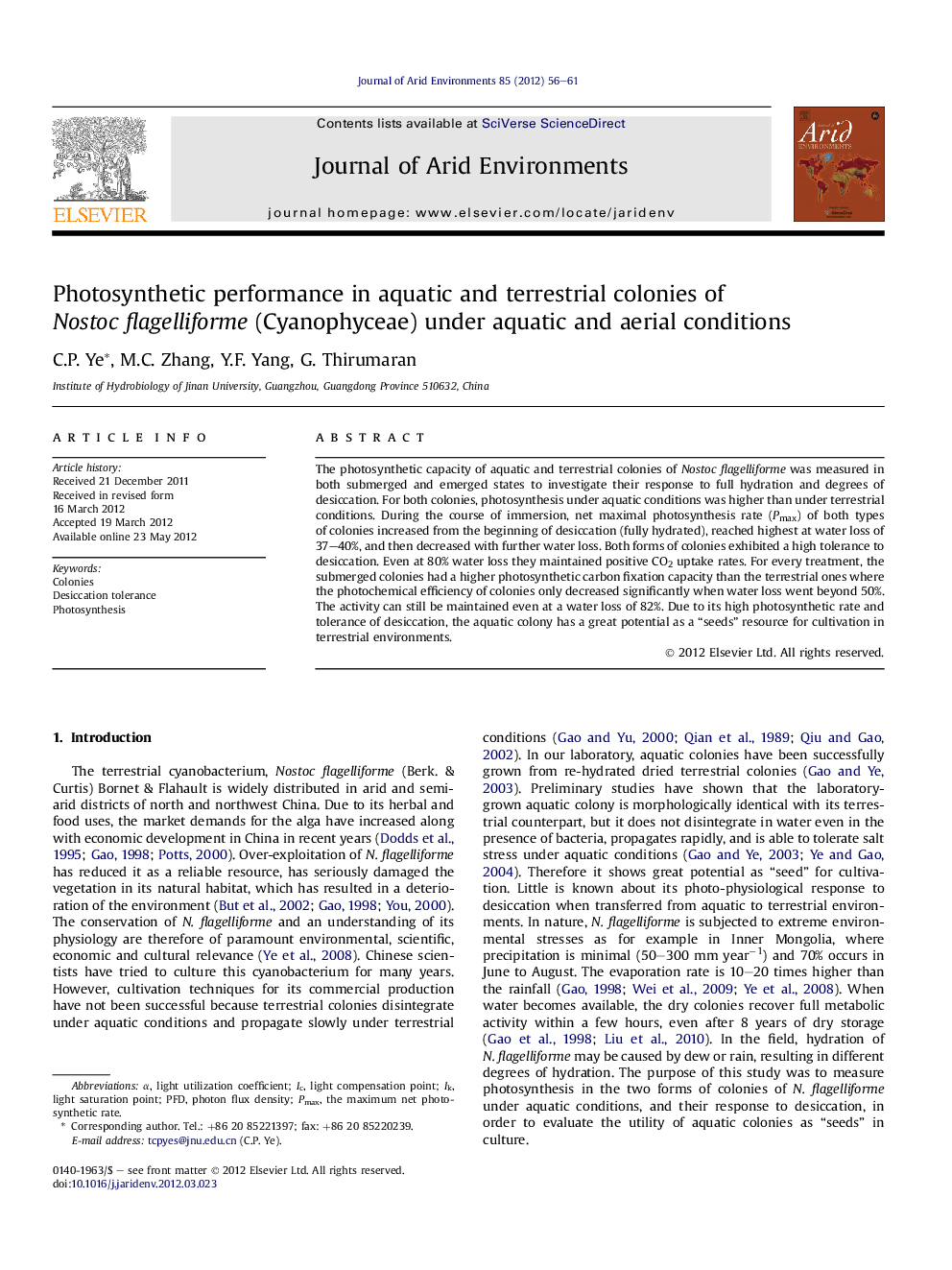| Article ID | Journal | Published Year | Pages | File Type |
|---|---|---|---|---|
| 4393311 | Journal of Arid Environments | 2012 | 6 Pages |
The photosynthetic capacity of aquatic and terrestrial colonies of Nostoc flagelliforme was measured in both submerged and emerged states to investigate their response to full hydration and degrees of desiccation. For both colonies, photosynthesis under aquatic conditions was higher than under terrestrial conditions. During the course of immersion, net maximal photosynthesis rate (Pmax) of both types of colonies increased from the beginning of desiccation (fully hydrated), reached highest at water loss of 37–40%, and then decreased with further water loss. Both forms of colonies exhibited a high tolerance to desiccation. Even at 80% water loss they maintained positive CO2 uptake rates. For every treatment, the submerged colonies had a higher photosynthetic carbon fixation capacity than the terrestrial ones where the photochemical efficiency of colonies only decreased significantly when water loss went beyond 50%. The activity can still be maintained even at a water loss of 82%. Due to its high photosynthetic rate and tolerance of desiccation, the aquatic colony has a great potential as a “seeds” resource for cultivation in terrestrial environments.
► Both colonies showed strong photosynthetic tolerance against desiccation. ► Photosynthesis of colonies under aquatic were higher than under aerial conditions. ► Photosynthetic rate in aquatic colonies was the highest in all treatments. ► Aquatic colony has great photosynthetic potential as “seeds” in application.
